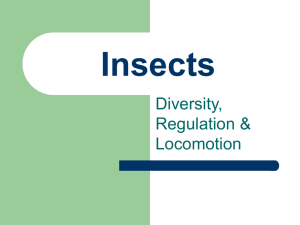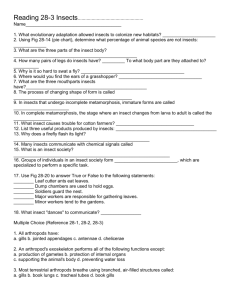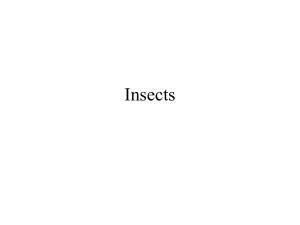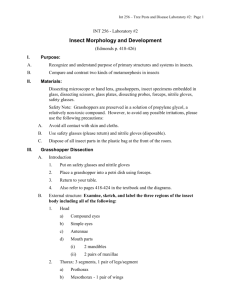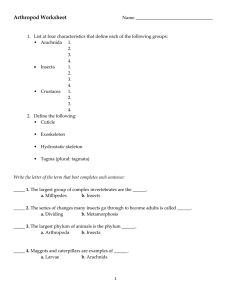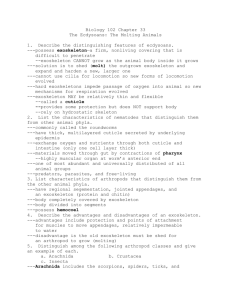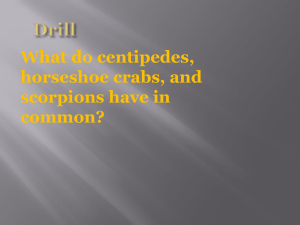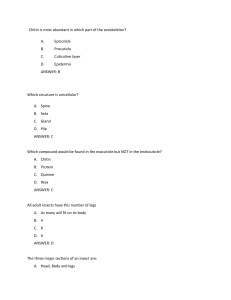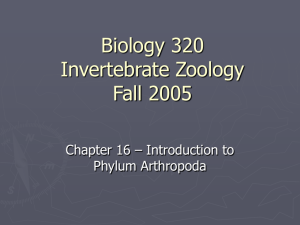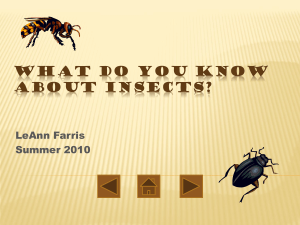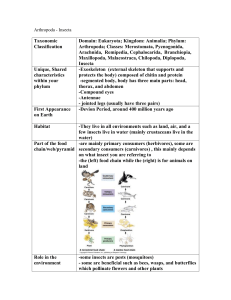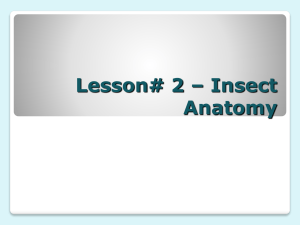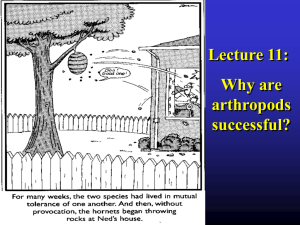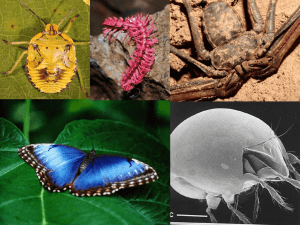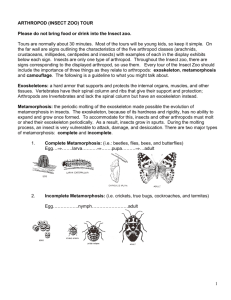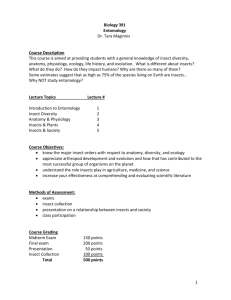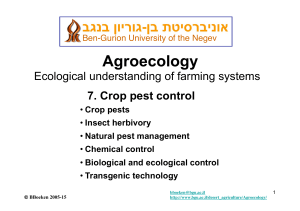IB1091003 Good things in small packages
advertisement
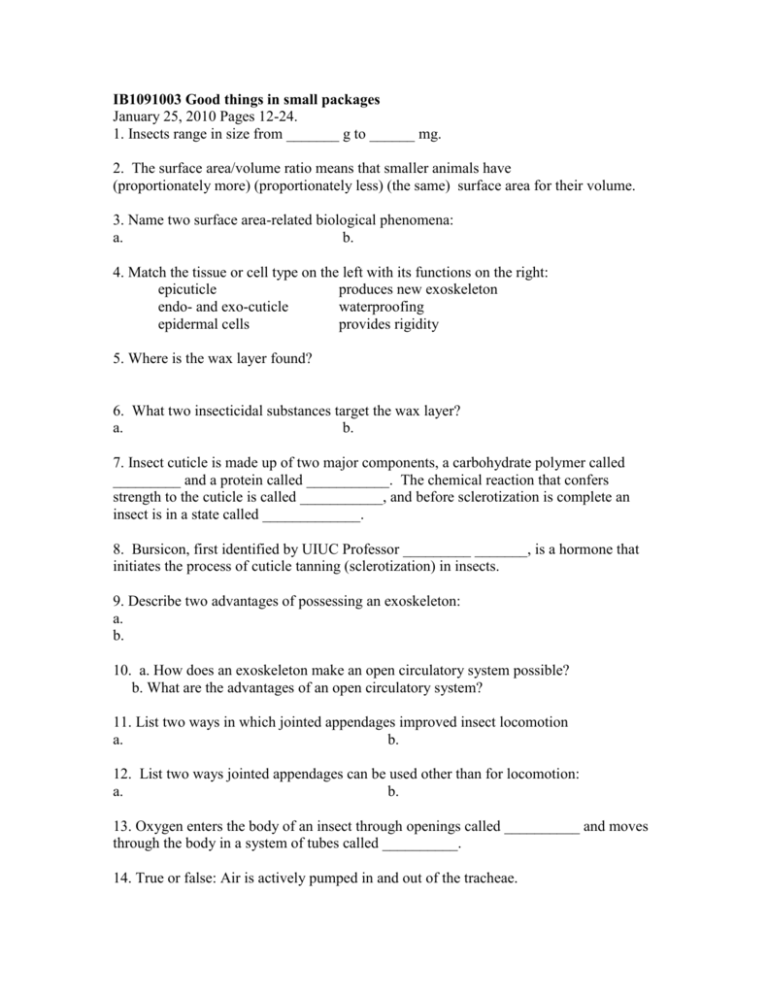
IB1091003 Good things in small packages January 25, 2010 Pages 12-24. 1. Insects range in size from _______ g to ______ mg. 2. The surface area/volume ratio means that smaller animals have (proportionately more) (proportionately less) (the same) surface area for their volume. 3. Name two surface area-related biological phenomena: a. b. 4. Match the tissue or cell type on the left with its functions on the right: epicuticle produces new exoskeleton endo- and exo-cuticle waterproofing epidermal cells provides rigidity 5. Where is the wax layer found? 6. What two insecticidal substances target the wax layer? a. b. 7. Insect cuticle is made up of two major components, a carbohydrate polymer called _________ and a protein called ___________. The chemical reaction that confers strength to the cuticle is called ___________, and before sclerotization is complete an insect is in a state called _____________. 8. Bursicon, first identified by UIUC Professor _________ _______, is a hormone that initiates the process of cuticle tanning (sclerotization) in insects. 9. Describe two advantages of possessing an exoskeleton: a. b. 10. a. How does an exoskeleton make an open circulatory system possible? b. What are the advantages of an open circulatory system? 11. List two ways in which jointed appendages improved insect locomotion a. b. 12. List two ways jointed appendages can be used other than for locomotion: a. b. 13. Oxygen enters the body of an insect through openings called __________ and moves through the body in a system of tubes called __________. 14. True or false: Air is actively pumped in and out of the tracheae. 15. True or false: Insects have a closed circulatory system similar to humans. 16. List two ways in which wings enhanced insect lifestyles: a. b. 17. How long ago did arthropod internal fertilization evolve? 18. Describe one disadvantage of possessing an exoskeleton: 19. What is ecdysis? What is eclosion? 20. Arrange the life stages nymph, egg, pupa, larva, and imago in chronological sequence: Hemimetabolous development Holometabolous development 21. In holometabolous development, adult tissues are quiescent throughout the immature stages in islands of adult cells called __________ ___________. 22. What is the one exception to the “Wings can never be molted”? 23. Explain the principal difference between endopterygotes and exopterygotes (as reflected in their names) and provide an example (name of an order) of each: Exopterygote: Endopterygote:
